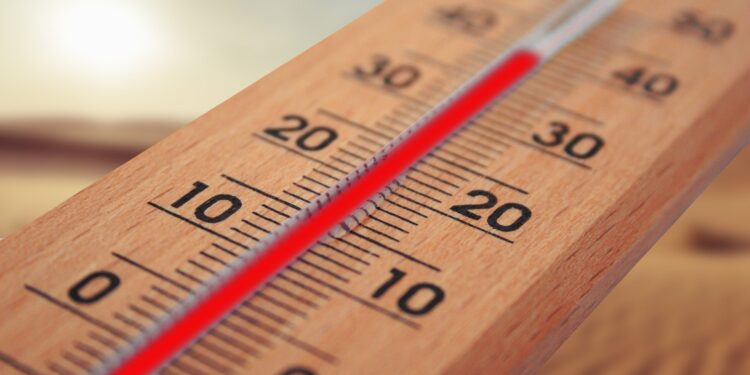Credit: Pixabay/CC0 Public domain
A new study from the University of Surrey finds that temperature, day length and humidity are linked to the increased spread of diarrheal diseases. The findings could help predict new outbreaks of the disease, potentially leading to better preparedness within health services. This study is published in the journal PLOS Computational Biology.
In this unique study, researchers led by Dr. Giovanni Lo Iacono investigated the impact of weather on the transmission of campylobacteriosis, a bacterial infection that can cause diarrhea and stomach pain. According to the World Health Organization, Campylobacter infections are the most common cause of human bacterial gastroenteritis worldwide. Infections are usually mild, but can be fatal in very young children, the elderly, and immunocompromised people.
Dr Giovanni Lo Iacono, Senior Lecturer in Biostatistics and Epidemiology at the University of Surrey School of Veterinary Medicine and contributor to the recent UKSHA study into the health effects of climate change, said: “Since Hippocrates, there was broad consensus that weather and climate influence the spread of disease. Understanding why and which specific environmental factors promote the spread of disease is a complex and poorly understood issue.
“We now have a detailed description of how weather affects disease, and the next step is to understand why. Importantly, with our transparent and conceptually simple approach, we can now determine the risk of contracting the disease when we know recent events. local weather.
“This information is invaluable as diseases such as campylobacteriosis not only cause discomfort in individuals, but also have huge societal impacts with people having to travel to work and place additional pressure on health services across the world.”
To determine whether weather conditions impact the incidence of campylobacteriosis, researchers analyzed data from around 1 million cases of campylobacteriosis in England and Wales over a 20-year period from the UKHSA . An innovative mathematical model was developed by the team to compare this data provided by the Met Office with the meteorological parameters of the time.
Analysis of these data showed that campylobacteriosis incidences were constant below temperatures of 8°C. However, a sharp increase in infections (around 1 case per million) was observed for every 5°C increase in temperature, where temperatures were between 8°C and 15°C. A link to humidity was identified by the team who also observed high infection incidents when water vapor levels in the air were between 75% and 80%.
Interestingly, researchers observed strong associations between day length (more than 10 hours) and increased cases of illness. This association was further strengthened when humidity was also high. Precipitation and wind speed were not strongly related to the spread of campylobacteriosis.
Dr Lo Iacono added: “What we found is that rising temperatures, humidity and increased day length are associated with the spread of campylobacteriosis. We don’t fully understand why this may be happening. It could be that hot weather increases the survival and spread of pathogenic bacteria (therefore the weather causes illness) or it could be that people behave and socialize during these times.
“However, what we do know is that climate change not only has an environmental impact, but it can also harm our health by promoting the spread of infectious diseases.”
Gordon Nichols, visiting professor at the University of Surrey, said: “Environmental data can help us understand complex patterns of disease spread. Having this knowledge is invaluable as it can help us identify areas vulnerable to potential outbreaks and ensure they have the resources available to treat those affected and curb the spread of the disease to other areas. »
More information:
PLOS Computational Biology (2024). DOI: 10.1371/journal.pcbi.1011714. journals.plos.org/ploscompbiol …journal.pcbi.1011714
Provided by the University of Surrey
Quote: Climate change linked to the spread of diarrheal diseases (January 18, 2024) retrieved on January 18, 2024 from
This document is subject to copyright. Apart from fair use for private study or research purposes, no part may be reproduced without written permission. The content is provided for information only.



